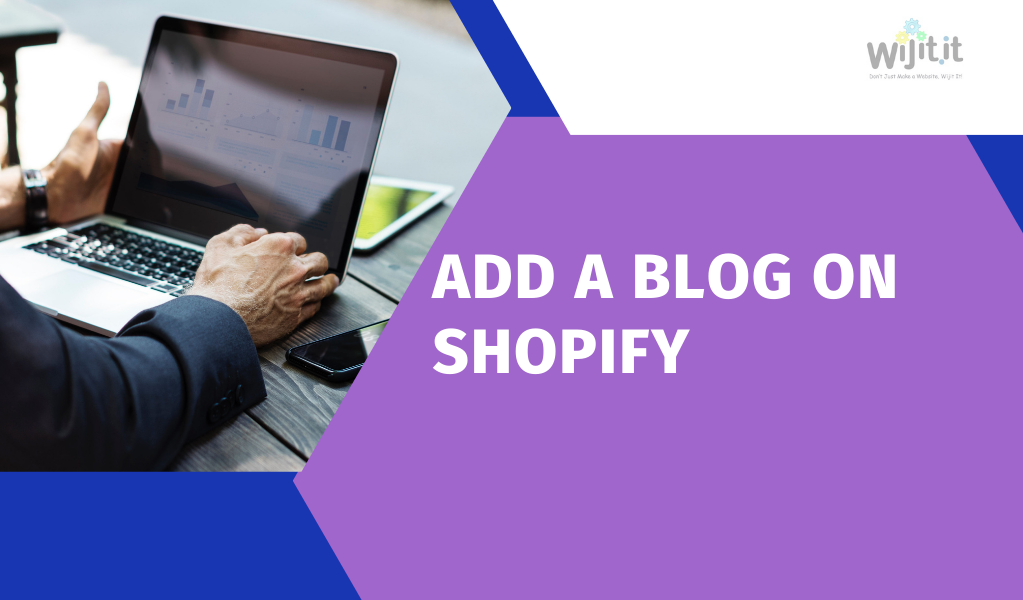
Creating a blog on Shopify is a great way to engage with your audience, share valuable content, and drive more traffic to your store. A well-maintained blog can enhance your SEO efforts and provide a platform for showcasing your expertise in your niche.
In this guide, we will walk you through the steps to add a blog to your Shopify store and share some best practices for making the most of it.
Table of Contents
- Why Add a Blog to Your Shopify Store?
- How to Add a Blog to Shopify
- Step 1: Access Your Shopify Admin Dashboard
- Step 2: Create a New Blog Post
- Step 3: Customize Your Blog Settings
- Step 4: Organize and Categorize Your Blog Posts
- Step 5: Publish and Promote Your Blog
- Best Practices for Your Shopify Blog
- Creating Quality Content
- SEO Optimization
- Utilizing Visuals
- Engaging with Your Audience
- Conclusion
1. Why Add a Blog to Your Shopify Store?
A blog can be an invaluable addition to your Shopify store for several reasons:
- Boost SEO: Regularly updated content can help your store rank higher on search engines. Each blog post is an opportunity to target different keywords and drive organic traffic to your site.
- Build Brand Authority: Sharing insights, tutorials, and news about your industry helps position your brand as an expert.
- Engage with Your Audience: Blogs provide a platform to connect with your customers, receive feedback, and build a community around your brand.
- Promote Products: You can subtly promote products within your blog posts, increasing sales without being overly promotional.
Read Also : How To Add Color Swatches to Products in Shopify
2. How to Add a Blog to Shopify
Adding a blog to your Shopify store is a straightforward process. Here’s how to do it:
Step 1: Access Your Shopify Admin Dashboard
- Log in to your Shopify account.
- From the Shopify admin, go to Online Store > Blog Posts.
Step 2: Create a New Blog Post
- Click on Create blog post. This will open the blog post editor where you can start writing.
- Enter a Title: The title should be catchy and relevant to the content of your post. This is also an important factor for SEO, so include your primary keyword.
- Write Your Content: Start by writing your blog post in the editor. You can use various formatting options such as headings, bold, italics, bullet points, and more to structure your content.
- Add Images and Videos: To make your content more engaging, consider adding images, videos, or GIFs. Shopify allows you to easily upload media files to your blog posts.
Step 3: Customize Your Blog Settings
- Choose a Blog: In the “Blog” section, choose which blog you want this post to be part of. By default, Shopify has a blog called “News,” but you can create additional blogs if needed.
- Set the Author: Choose who will be listed as the author of the post. This could be you or another team member.
- Add Tags: Tags help organize your content and make it easier for customers to find what they’re looking for. Use relevant tags for each post.
- SEO Optimization: In the “Search engine listing preview,” you can edit the meta title, description, and URL for your post. Make sure to include your target keywords to improve search engine visibility.
Step 4: Organize and Categorize Your Blog Posts
- Create Multiple Blogs: You can have multiple blogs on your Shopify store, each serving a different purpose. For example, one blog for news and updates, another for tutorials, and another for customer stories.
- Use Tags Effectively: Tags help to categorize content and make it more discoverable. Ensure each post is tagged with relevant keywords that relate to the content.
Step 5: Publish and Promote Your Blog
- Save Your Draft: Before publishing, make sure to save your work. Shopify allows you to save a blog post as a draft, which you can edit later.
- Set a Publishing Date: You can publish your post immediately or schedule it for a future date. This is useful for planning your content calendar in advance.
- Publish: Once you’re satisfied with your post, click on Publish.
- Promote Your Blog Post: Share your new blog post on social media, in your email newsletters, and across other channels to drive traffic to your store.
Read More : Backup and restore Shopify store data : A Step-by-Step Guide
3. Best Practices for Your Shopify Blog
To maximize the impact of your Shopify blog, follow these best practices:
Creating Quality Content
- Understand Your Audience: Create content that resonates with your audience. Consider their interests, needs, and pain points when brainstorming topics.
- Be Authentic and Engaging: Write in a voice that reflects your brand’s personality. Be genuine, and aim to create a connection with your readers.
- Provide Value: Every post should provide value to the reader, whether it’s through educational content, entertainment, or inspiration.
SEO Optimization
- Keyword Research: Before writing, perform keyword research to find out what your target audience is searching for. Use these keywords naturally within your post.
- Optimize Meta Descriptions: A compelling meta description can increase click-through rates from search engines.
- Use Internal and External Links: Internal links help with site navigation and SEO, while external links can provide additional resources to your readers.
Utilizing Visuals
- Include High-Quality Images and Videos: Visuals can make your blog posts more engaging and help convey your message more effectively. Use high-quality images that are relevant to your content.
- Optimize Image SEO: Use descriptive file names and alt text for all images to improve your SEO.
Engaging with Your Audience
- Enable Comments: Allow readers to leave comments on your blog posts. This encourages interaction and can provide valuable feedback.
- Respond to Comments: Engage with your readers by responding to their comments. This can help build a community and foster loyalty.
Read More : Backup and restore Shopify store data : A Step-by-Step Guide
4. Conclusion
Adding a blog to your Shopify store is an excellent way to drive traffic, engage with customers, and build your brand’s authority. By following the steps outlined above and adhering to best practices, you can create a compelling blog that adds value to your business. Remember to consistently update your blog with fresh, high-quality content to keep your audience coming back for more.
